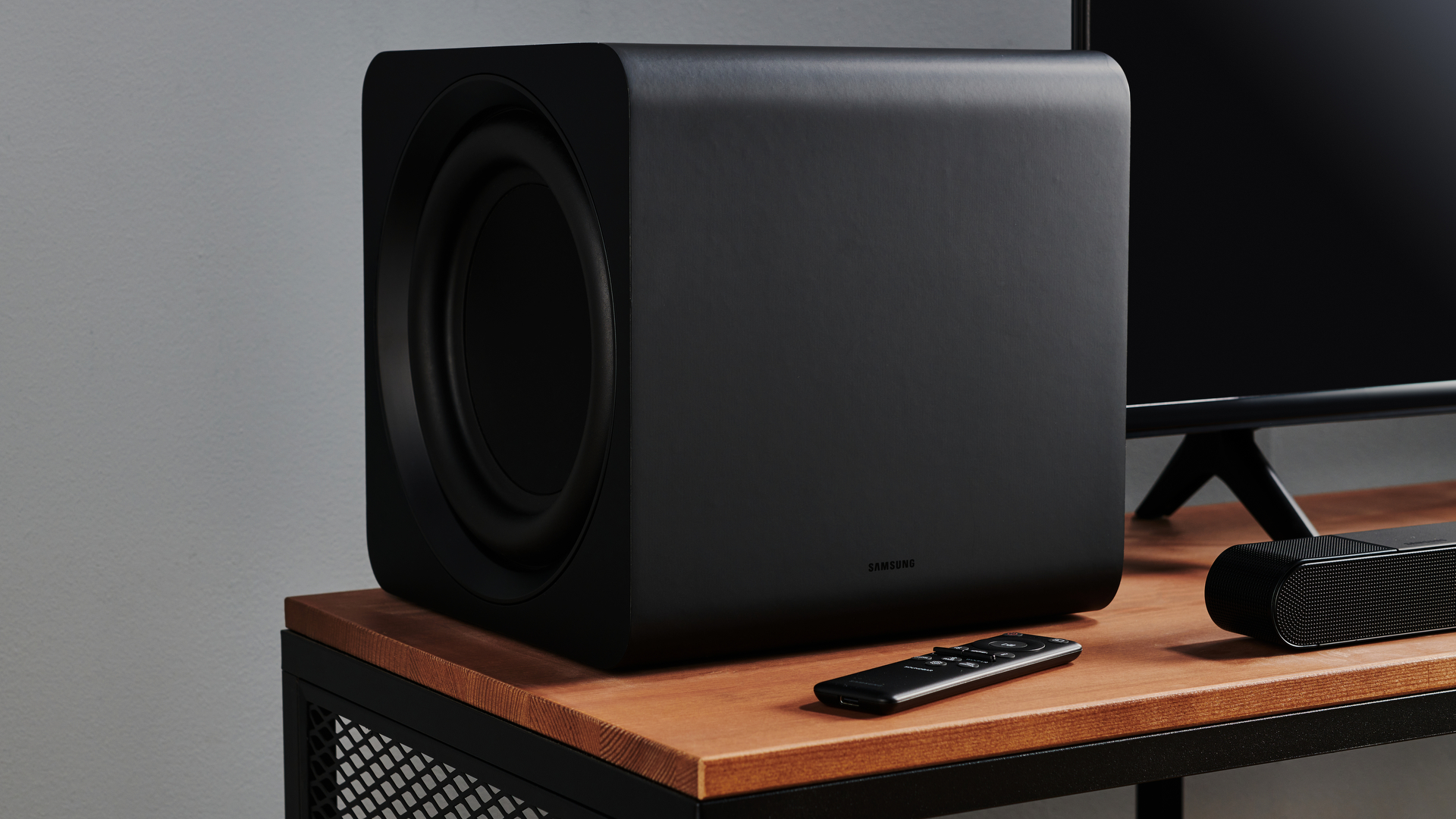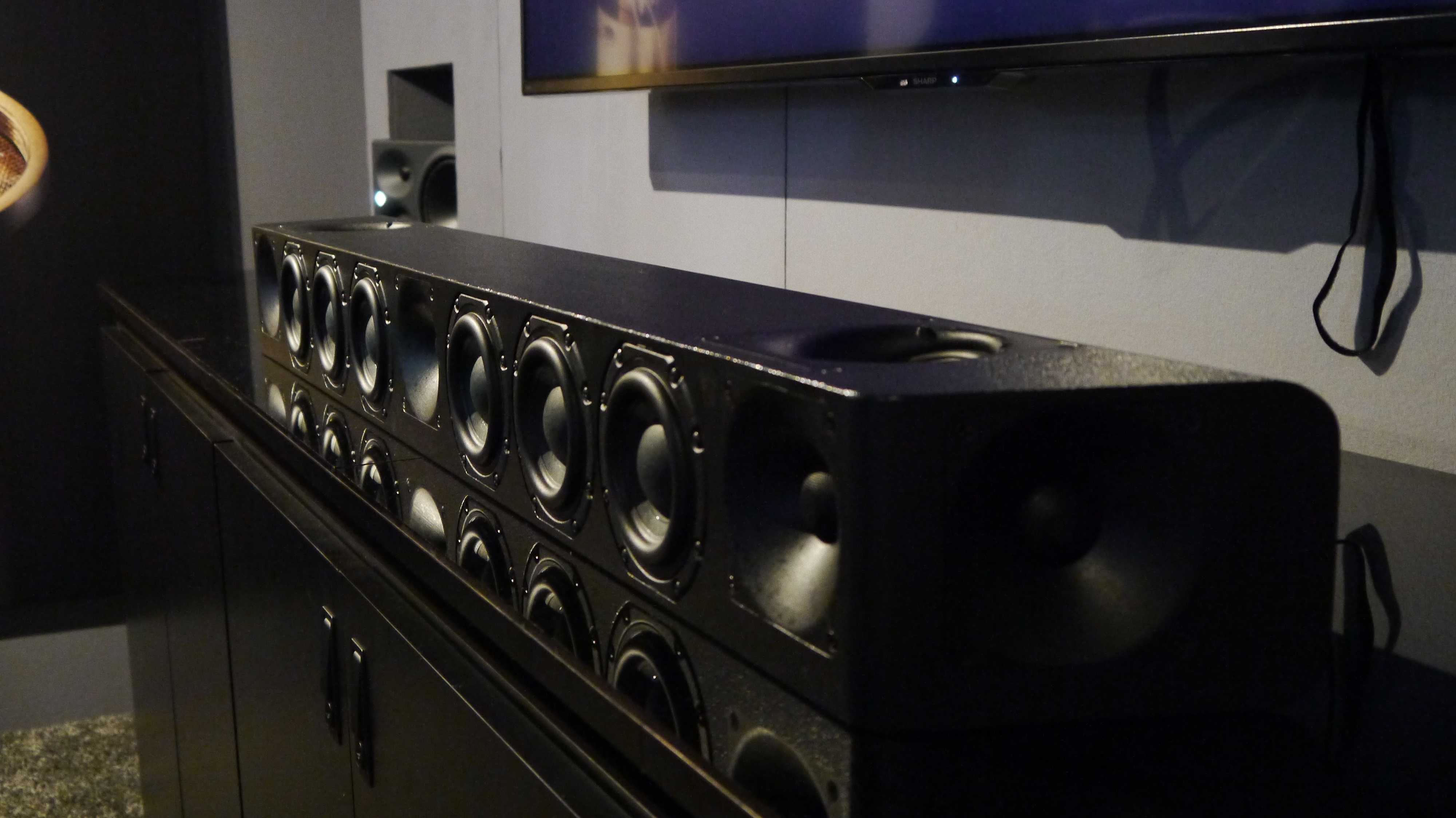How to get the best bass from a Dolby Atmos soundbar
The best soundbars offer a distinct advantage over the built-in speakers found on most TVs, as they can actually deliver bass. Perhaps most importantly, this ability makes voices and music on TV shows sound more natural and clear, and it can make movies more exciting where soundtracks normally get an extra kick from something called low-frequency effects (LFE).
A soundbar’s bass capability is built in – once you’ve bought one, there’s not much you can do to improve performance. Because of this, it’s crucial to choose the right model for your situation and to understand what each type of soundbar can achieve in terms of bass extension.
In order to make this decision, it helps to understand something about bass. First off, what are the differences between Bass and LFE and how does your soundbar deal with them?
When we talk about audio frequencies (e.g. the range from 20 Hz to 20,000 Hz that the human ear can hear), bass is categorized as the range that extends from 250 Hz all the way down to 60 Hz. Frequencies below this point are called sub-bass, and to be reproduced properly they require a specific type of speaker called a subwoofer.
Bass in movies can be heard in music, effects, and dialogue (the fundamental frequency range of an average adult male is from about 180 Hz down to 80 Hz). LFE, on the other hand, is a separate channel in the soundtrack – yes, the “.1” in 5.1 – and contains only bass and sub-bass content, sometimes going as low as 3Hz.
How does your soundbar handle bass and LFE in soundtracks? A built-in Dolby Atmos or DTS processor mixes the LFE with the bass, and this combined content is reproduced in the best possible way by the soundbar. However, many soundbars aren’t capable of transmitting much sub-bass, so the better ones use digital signal processing to “manage” the bass and sub-bass output, allowing the bar’s built-in speakers to reproduce as much of it as they can handle , without adding distortion.

The Subwoofer Advantage
Soundbar systems equipped with a separate subwoofer have a better chance of handling deep sub-bass content in movie soundtracks because they are equipped with a speaker dedicated to the task. But it’s usually hard to tell how low the system’s included subwoofer will go, as soundbar manufacturers often don’t publish frequency response specs. (So it was with the LG S80QY which TechRadar recently reviewed.)
While a larger subwoofer is generally better when it comes to producing deep sub-bass, soundbar manufacturers are often just as interested in using it to process sounds in the higher frequency range. This allows them to design slim and compact soundbars that don’t take up too much space and visually dominate the room – the Samsung HW-S800B which TechRadar checked, for example.

Integrated sound bars
A separate subwoofer will always deliver the deepest and loudest bass, but some listeners prefer the convenience and elegance offered by an integrated single-unit soundbar. Manufacturers of the best soundbars put significant effort into creating models with above-average bass, although that design effort is inevitably reflected in their above-average prices.
Good examples of such soundbars are the Devialet Dione, Sennheiser Ambeoand Sonos Arc. Both the Dione and Arc appear to be designed for maximum bass in as compact a package as possible, with both models containing 8 ovoid woofers. The Ambeo, on the other hand, has six 4-inch cone woofers and is designed to deliver bass down to 30Hz (Devialet claims its soundbar can reach frequencies down to 24Hz).
What do you sacrifice when buying such a bass-capable soundbar? Both Dione and Ambeo are undeniably chunky. Because of this, placement needs to be considered, and they’re definitely not the best options for wall mounting.
In contrast, the Arc is a slimmer design, although it’s not known to deliver the same high-octane bass impact as the other two models. Thankfully, Sonos soundbars like the Arc can be paired with this company’s powerful but pricey wireless sub-woofer, which should give most listeners the low-frequency extension they need. (Both Dione and Ambeo are true all-in-one options, not designed for use with a separate subwoofer.)

The advantage of the AV receiver
While the subwoofers that come with soundbar systems are meant to be setup-and-forget designs, the custom-built subwoofers used with surround-sound speaker packages offer a wide array of features to customize their output and sound quality . Such subs also fully transmit the LFE in movie soundtracks, relieving the system’s main speakers of this task.
The connections and controls to make it all possible are housed in an AV receiver, an all-in-one component that houses the processing and audio and video switching, as well as the amplifiers to power the system’s main speakers. Extensive receiver setup options allow you to set the specific frequency at which each speaker cuts off in a surround sound system, with bass frequencies below that point then being routed directly to the subwoofer.
The advantages of this setup over a soundbar? By tailoring the bass handling specifically for each speaker and letting the subwoofer do the heavy bass work, movie soundtracks (and music) have greater dynamic range and dialogue coming from the center speaker is clearer. It’s more complicated and requires a lot more work than simply placing a soundbar under a TV screen. But for more discerning listeners, a separate speaker-plus-subwoofer system fed by an AV receiver can work audio magic.